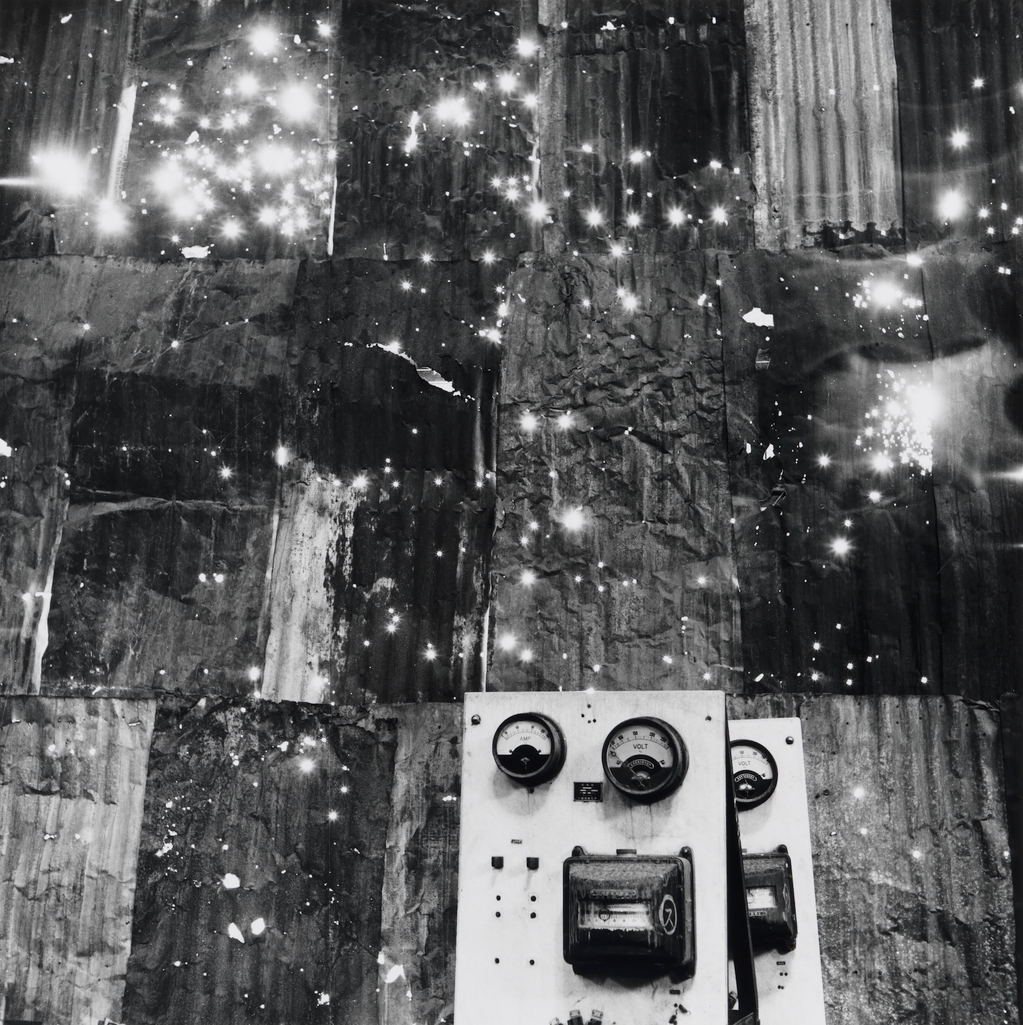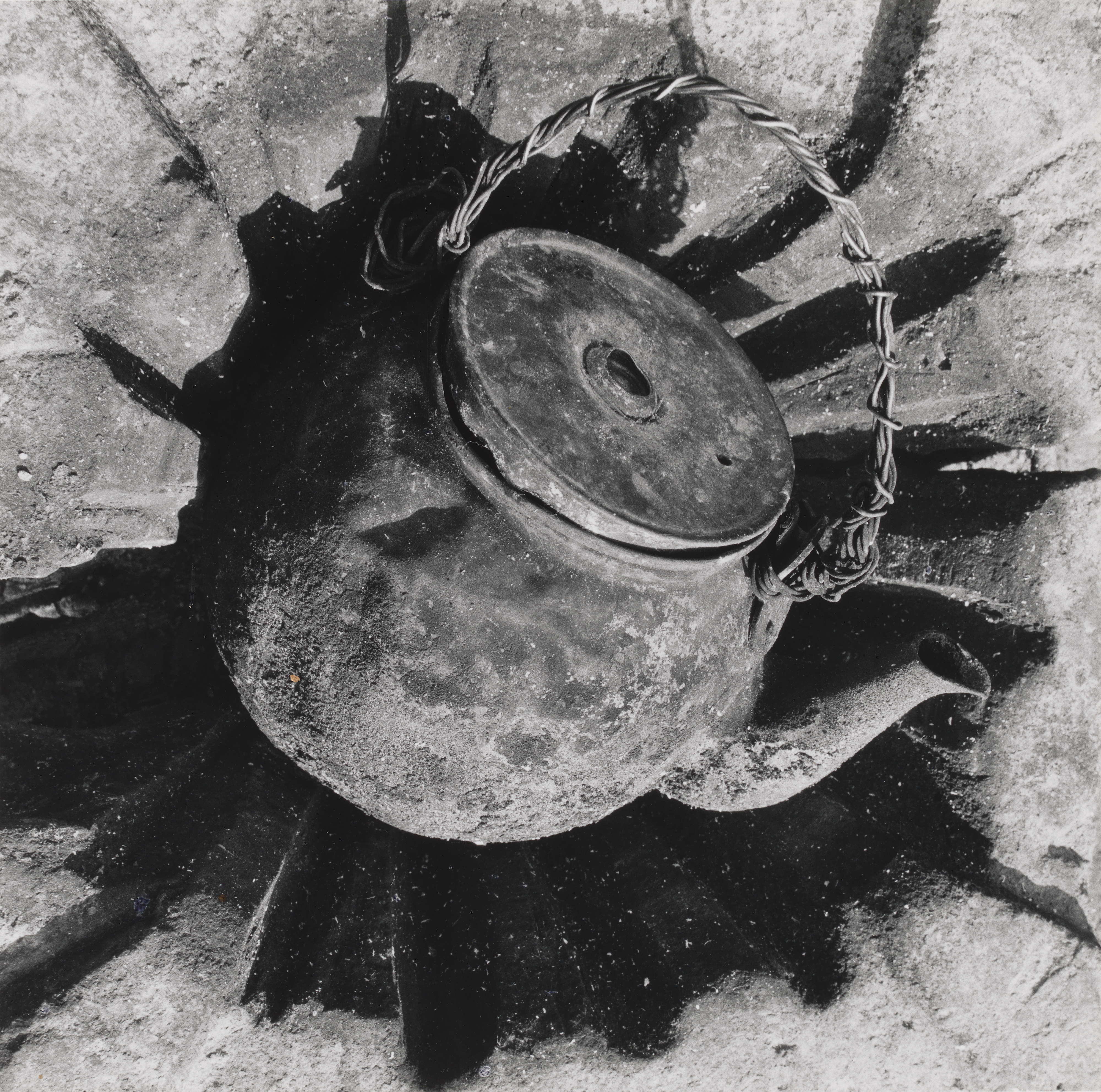Artist
Shomei Tomatsu
Japanese
1930, Nagoya, Aichi Prefecture
2012, Naha, Okinawa Prefecture

interviews
- see transcript
Shomei Tomatsu: The First Decade
Photographer Shomei Tomatsu spent his early career capturing Japan’s economic and sociocultural recovery from the devastation of World War II. He describes making pictures of small towns, natural disasters, and local leaders in this 2006 documentary by filmmaker John Junkerman.
Works in the Collection by Shomei Tomatsu
-

Shomei Tomatsu
Ironic Birth, a Study, Nagoya
1950, printed 1976 -

Shomei Tomatsu
Untitled, from the series Disabled Veterans, Nagoya
1952, printed 2003 -

Shomei Tomatsu
Untitled, from the series Pottery Town, Seto, Aichi
1954, printed 1974 -

Shomei Tomatsu
Homeworkers, from the series Pottery Town, Seto, Aichi
1954, printed 1980 -

Shomei Tomatsu
Untitled [Ishiki, Aichi], from the series Floods and the Japanese
1959, printed 1991 -

Shomei Tomatsu
Untitled, from the series Memory of War, Toyokawa, Aichi
1959, printed later -

Shomei Tomatsu
Untitled, from the series Home, Amakusa, Kumamoto
1959, printed 1980 -

Shomei Tomatsu
Untitled, from the series Chewing Gum and Chocolate
1959, printed 2003 -

Shomei Tomatsu
Untitled [Nagoya], from the series Floods and the Japanese
1959, printed 1990
Essays and Artist Talks
-
Exhibiting “The End of Modern Photography”: Ten Artists of Contemporary Japanese Photography and Fifteen Photographers Today
February 2022
The exhibitions Ten Artists of Contemporary Japanese Photography (July 15–August 21, 1966) and Fifteen Photographers Today (July 26–September 8, 1974), held at the National Museum of Modern Art, Tokyo, gathered recent works by artists who played indispensable roles in the development of Japanese photography after World War II.[1] They featured key representatives of the first generation of postwar photographers such as Eikoh Hosoe, Ikko Narahara, Akira Sato, and Shomei Tomatsu—all members of the VIVO group, which sought to renew photographic expression—as well as figures associated with the influential journal Provoke such as Daido Moriyama, Takuma Nakahira, and Yutaka Takanashi. The earliest work, shown in Ten Artists of Contemporary Japanese Photography, dated to 1962, while Fifteen Photographers Today included ongoing series published in journals through (and beyond) the year of the exhibition itself. The two presentations together thus highlighted the major trends of nearly fifteen years of Japanese photography—an era that is now regarded as one the most exciting periods for the medium in postwar Japan. In order to understand the significance of these exhibitions, one must first consider the backdrop. The National Museum of Modern Art, founded in 1952 in the Kyobashi area of Tokyo, mounted The Exhibition of Contemporary Photography—Japan and America one year after its establishment. As indicated by its title, the exhibition united some of the most significant Japanese postwar photography with American works, selected from the collection of the Museum of Modern Art, New York.[2] In the thirteen years between that presentation and Ten Artists of Contemporary Japanese Photography, the museum held six more photography shows.[3] Many focused on Japanese photography specifically, and most centered on work from the postwar era. All of them prioritized the introduction of contemporary trends. In those days, the National Museum of Modern Art did not have a curator of photography. Instead, up through the time of Fifteen Photographers Today, it nominated curatorial committees of external specialists to determine the content of its photography exhibitions. The committee members were Japan’s most renowned photography critics and editors of leading photography journals—figures who, month by month, browsed the pages of publications dedicated to the art form and wrote critical essays and commentaries, both closely following and shaping current trends. Due to the curators’ broad insights into the field, their exhibitions provided well-balanced overviews of the medium during this period; one might call them straightforward expressions of the self-image of the Japanese photography scene, analyzing contemporary movements and highlighting their most representative works rather than addressing particular topics. Prime examples were the three Contemporary Photographs exhibitions of 1960, 1961, and 1963. Each of these nearly annual presentations featured pictures that had been published in magazines or exhibited the preceding year, offering a cross section of the most recent and outstanding developments in the field.[4]Three years after the cancellation of the Contemporary Photographs shows, the museum mounted Ten Artists of Contemporary Japanese Photography, this time using a different curatorial framework. According to a text in the exhibition catalogue (fig. 1) by Shigene Kanamaru, a member of the selection committee, the participating photographers could be divided into two groups: those who started working from ideas or concepts, reflecting a “subjective” approach, and those who were more concerned with understanding the people, places, and things they depicted, reflecting an “objective” approach.[5] Kanamaru adapted this terminology from the notion of “subjective photography” that had gained traction in the late 1950s and early 1960s.[6] Thus, whereas the Contemporary Photographs exhibitions aimed to present comprehensive selections of the best work in all genres from a given year—from the purely artistic to photojournalism, advertisements, and scientific photography—Ten Artists of Contemporary Japanese Photography moved in a more narrowly defined direction, considering the trends of the past several years but highlighting only those deemed most deserving of broader attention.[7] The organizers of Ten Artists of Contemporary Japanese Photography, and later Fifteen Photographers Today, also deliberately focused on a new generation. While the Contemporary Photographs exhibitions showcased pictures by photographers of a considerable age range, all of the participants in Ten Artists of Contemporary Japanese Photography began their careers after the war. With Yoshinobu Nakamura the oldest, at forty-one, and Kishin Shinoyama the youngest, at twenty-five, the group was quite young overall. This narrow age range would persist in Fifteen Photographers Today, where Masahisa Fukase was the oldest artist with work in the show, at forty, and Shigeru Tamura was the most junior, at twenty-seven. While all of the photographers had already received some degree of acclaim, they were still considered relatively young.
related exhibition

related exhibition
Shomei Tomatsu
Skin of the Nation
May 13, 2006–October 15, 2007
Little known outside his home country, Shomei Tomatsu is widely considered the most important figure in Japanese postwar photography. His photographs span more than 50 years, examining, in an absolutely personal and unique vision, the island nation in the years since World War II. Cinematic in scope and presentation, the approximately 240 photographs on view in Skin of the Nation — the first major American retrospective of Tomatsu’s work — provide a candid look at the aftereffects of the atomic bombing of Nagasaki, the influence of American military and popular culture, and the impact of the post-1960s economic boom in Japan. Comprising black-and-white as well as color pictures, the exhibition conveys a quiet brilliance, celebrating the photographer’s uncompromising regard toward a complex, nuanced subject.
This exhibition is organized by the San Francisco Museum of Modern Art in association with the Japan Society, New York. This exhibition is generously supported by the National Endowment for the Arts, Allan Alcorn, Linda and Jon Gruber, the E. Rhodes and Leona B. Carpenter Foundation, Bob and Randi Fisher, the Blakemore Foundation, Mr. and Mrs. William S. Fisher, Prentice and Paul Sack, Ellen Ramsey Sanger, The Japan Foundation, and Fuji Photo Film Co., Ltd. This exhibition is dedicated to the memory of Ellen Ramsey Sanger.
 Go to Exhibition
Go to Exhibition
Please note that artwork locations are subject to change, and not all works are on view at all times.
Only a portion of SFMOMA's collection is currently online, and the information presented here is subject to revision. Please contact us at collections@sfmoma.org to verify collection holdings and artwork information. If you are interested in receiving a high resolution image of an artwork for educational, scholarly, or publication purposes, please contact us at copyright@sfmoma.org.
This resource is for educational use and its contents may not be reproduced without permission. Please review our Terms of Use for more information.









